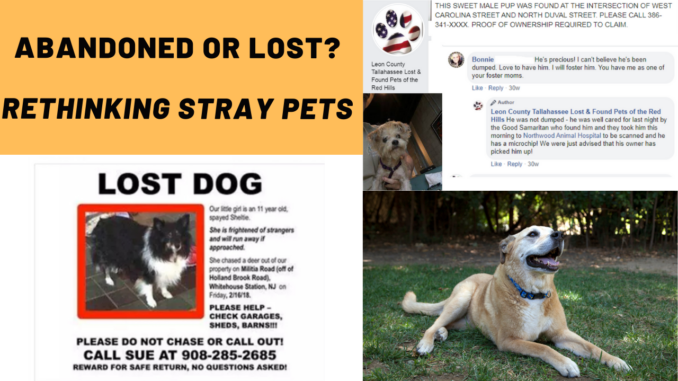
Conventional wisdom tells us that dogs and cats seen wandering the streets are unwanted, abandoned, dumped, but do we know this is true? More importantly, how does this belief affect our actions, and ultimately the fate of the animal?
Many beliefs we hold dear are in fact fallacies, but they can be hard to shake in favor of the truth. While there are certainly cases of abuse and neglect, in most cases, “stray” dogs have an owner who is looking for them and wants them back home, and we must assume this is the case unless proven otherwise.
The court of social media
We’ve all seen the posts. Go to any social media page and look at a picture of a found dog, followed by the inevitable comments. “Poor baby.” “Those owners should be put in jail.” “I’ll take him!” The viewers assume right away that the pictured dog has been badly treated and abandoned. Sometimes, thanks in part to the work of organizations like Mission Reunite, someone will pipe up and comment that the animal should be checked for a chip and a report should be made to animal control so the owner can be located. Often that lone voice is quickly shot down by others who will say that the owner, even if known, “doesn’t deserve to get him back.”
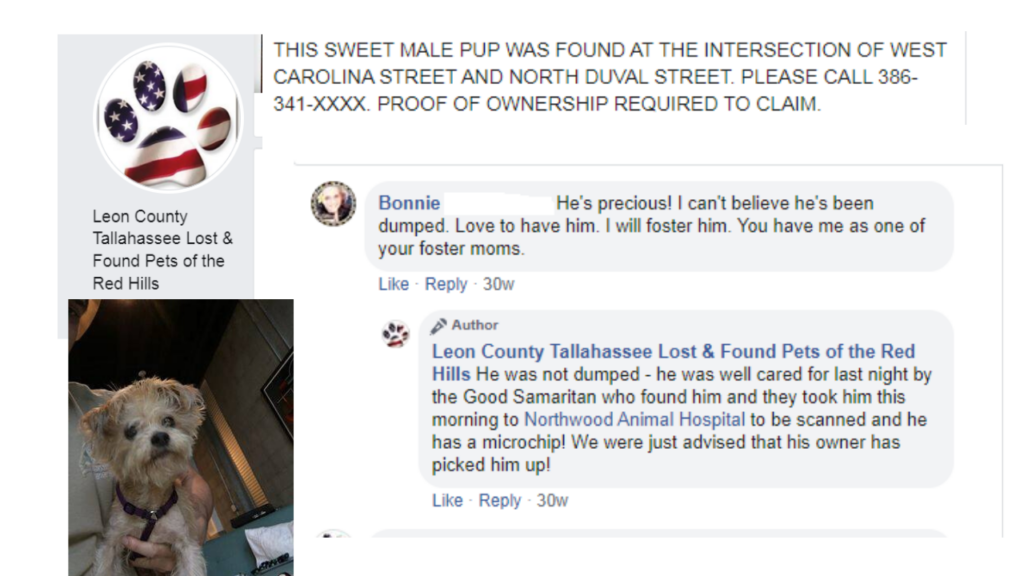
What exactly does someone have to do to “deserve” their pet? Prove to some people they don’t know on the internet that they provide good care? Even animal control is limited on what they can legally require of owners, and except in extreme cases their goal is a quick reunion. There are so many dogs and cats in need of homes that clogging the system with those not in need can have disastrous results. Stay tuned for articles on pet overpopulation and animal shelter intake management.
What happens to stray dogs in a shelter?
Let’s take a look at what can happen to a stray dog. If they are picked up by animal control or taken to a shelter by a finder, they will be scanned for a microchip. While it’s not a perfect system, in most cases the chip will be read by the scanner. Shelter staff will then call the chip company — there are more than 21 registries as of this year! — to determine registration. Ideally, the chip is currently and correctly registered and the owner can be contacted right away. In roughly half the cases, the chip is not currently and correctly registered, so some sleuthing must be done. The chip may be registered but the phone numbers are disconnected, it may be registered to a previous owner or breeder, or it may not be registered at all. Proactive shelters will go the extra mile to find this information, even engaging the help of groups like Microchip Hunters in especially challenging cases.
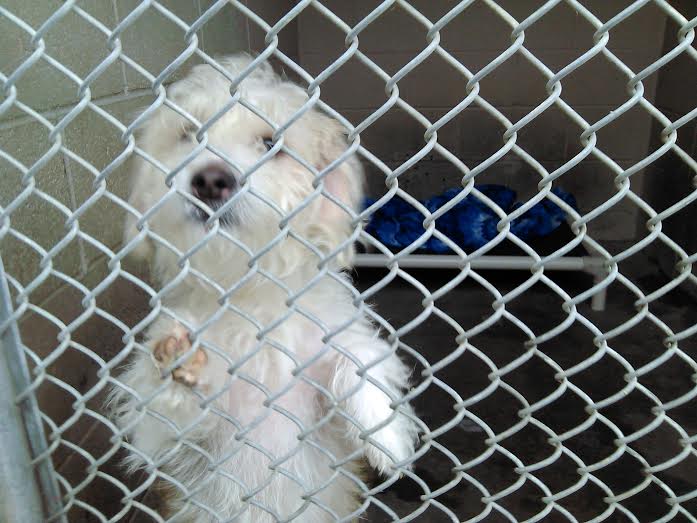
In the presence of a microchip or some other ID like a name tag or license, there will be some follow up and the dog will be held pending pickup by the owner. If no ID is found, the dog is photographed and entered into a database. Many shelters post pictures and descriptions of found pets online, but surprisingly many still do not. Whether this is due to another fallacious belief that people browse stray listings to steal pets — even though reclaim fees are typically higher than adoption fees, and don’t include all the sevices — or just plain laziness varies from location to location. In today’s age of internet and mobile devices, there is no excuse for not taking literally seconds to snap a photo and post it online.
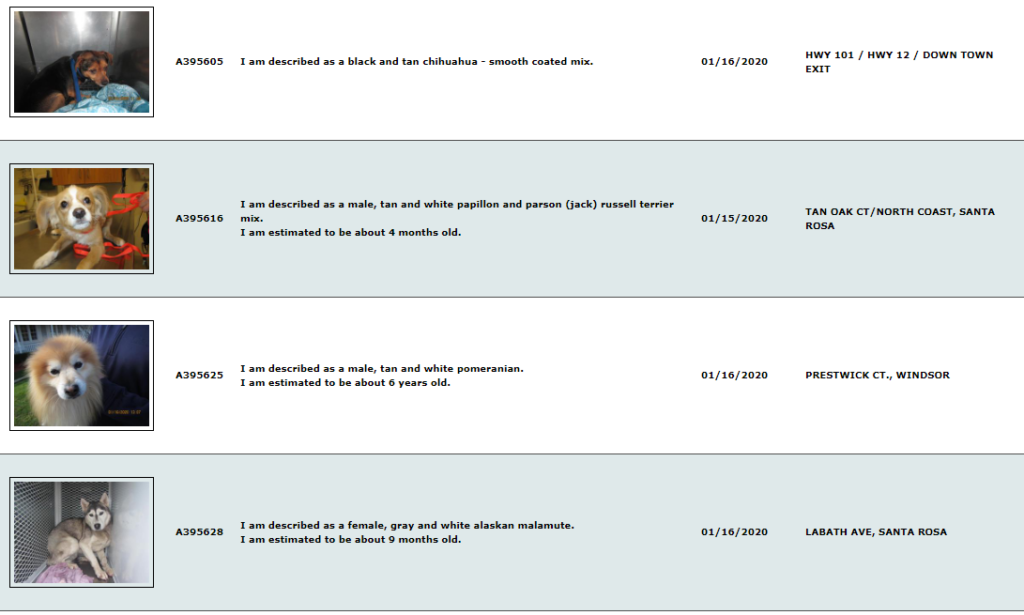
Non-shelter alternatives
Sometimes the finder doesn’t want to take the dog to the shelter for whatever reason. Maybe they fear it will be put down, or they want to keep the dog, or they just don’t know anything about shelters and animal control. There’s nothing wrong with a finder holding a pet instead of bringing it to the shelter, but they should, by law and by good ethics, do their due diligence to find the owner and give them a chance to reclaim. In this case, the first step is to take the dog to a vet to be scanned for a chip. If there is current owner info, the owner and finder will be connected so they can arrange the reunion. Recently, my friend who lives a few miles up the road found a dog. She came to my house becuse she knows I have a scanner and help people with lost and found pets. I scanned the dog and ping, a microchip! We called the registry and she was connected with the owner at once. She drove the dog to the owner’s house and returned him to his appreciative family. That’s how the system should work.
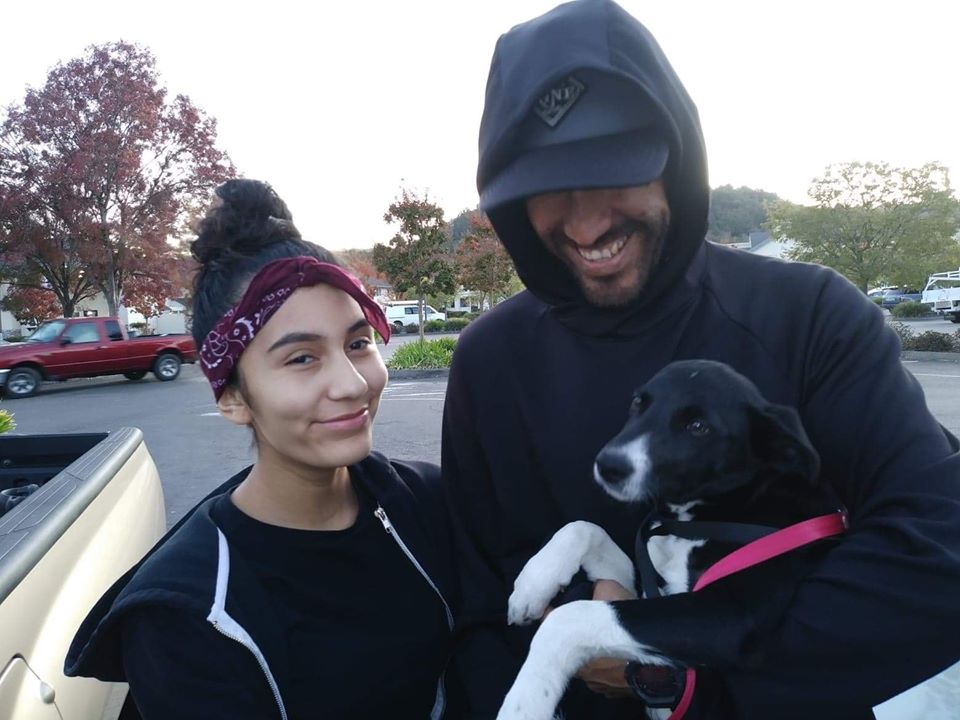
If there is no chip, the next step the finder should take is filing a report. If you don’t know where the shelter is that serves your area, start by calling your local law enforcement. They should be able to refer you. Many shelters take found reports over the phone or online. Sometimes you can upload or email a photo for their website. Check any lost reports in your area, both on paper at the shelter and online in the various social media groups. It’s not out of line to ask for proof of ownership, and in today’s world everyone has a phone with a camera, so photos of the dog will usually be offered. If there are no photos, answering a simple question like where did you get the dog, how old is he, where did you lose him? will suffice. Don’t grill an owner on how their dog got out, why isn’t he neutered, he looks thin. You are not an animal control officer and don’t have the right to make such demands of an owner. If you have a genuine concern like the dog gets out all the time, is significantly underweight, or has untreated injuries, return the dog then call animal control to report it.
Can I keep a stray dog?
How long should you wait before keeping a found dog as your own? The laws are surprisingly vague. Because stray laws in the U.S. originated over 150 years ago, they are focused primarily on rolling animals in and out of holding facilities as quickly as possible. In the early days of animal shelters, there were few reclaims and no adoptions, so long hold periods and outreach were unheard of, as was regulation of finder’s actions. Therefore the laws typically include some vague language like if a person takes up a stray they must make a reasonable effort to find the owner, if known. That’s not a quote, just the general gist of that section of law in many states. No hold period, no specific actions the finder must take, just a reasonable effort.
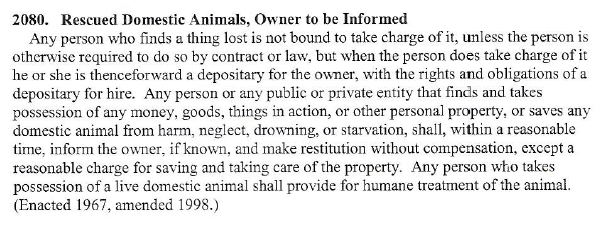
Over the years I have heard a number of made-up hold periods, the most popular of which is 30 days. Many people, even in shelters, believe that a finder must keep an animal for 30 days before taking ownership. No such law exists that I can locate, but I have to agree that 30 days seems reasonable. Consider if the owner doesn’t know where to look, is out of town, lives elsewhere, is in the hospital, or any other number of scenarios. If you have done all you can to find the owner for 30 days, that seems like a reasonable effort. Just keep in mind that they may show up later, and how will you handle it? If they are really determined, they could take you to civil court, and you would have to prove that you did your due diligence. For that reason, if your intentions are to keep the dog in the absence of an owner, keep records of your actions: a copy of any found dog sign or flyer, a copy of the report you made to the shelter, screen shots of social media posts reporting a found dog.
Burden of Proof
Let’s get back to the original question. How do we prove that found dogs are not unwanted, abandoned, or dumped? Actually, we don’t have to. This logical fallacy is called Burden of Proof. According to Your Logical Fallacy Is, “The burden of proof lies with someone who is making a claim, and is not upon anyone else to disprove. The inability, or disinclination, to disprove a claim does not render that claim valid, nor give it any credence whatsoever. However it is important to note that we can never be certain of anything, and so we must assign value to any claim based on the available evidence, and to dismiss something on the basis that it hasn’t been proven beyond all doubt is also fallacious reasoning.” So, in the absence of proof that the dog was abandoned, we must assume that he was not. A dog found alongside the road may have wandered from his home or jumped from a vehicle. Even if you saw a person pushing the dog out of a car door, how would you know that is the owner? It could be a dog-hating neighbor or enemy of the owner. It could be literally anyone.
I once found a dog in Pacifica and was taking her to the shelter in San Mateo. I had to stop at my work place in San Francisco on the way, and while I was there she escaped from my vehicle and ran off. She ended up at the San Francisco shelter where I had some explaining to do. Fortunately by the time I came in to reclaim her I had located the owner, so he gave me the money for the reclaim fee and took her back. What if someone found this older, scrappy looking dog running around the park in Bayview and took her in? They could easily have assumed she was “dumped.”
Do the right thing. Make every effort to find the owner. Don’t judge them if they live differently from the way you do. Don’t get yourself in legal trouble by playing animal control officer or refusing to return what, by law, is their property.





Be the first to comment